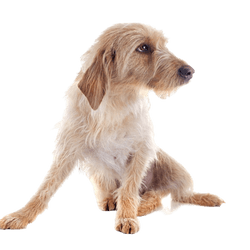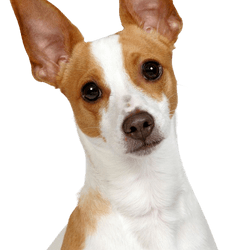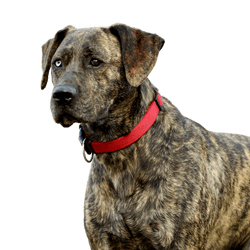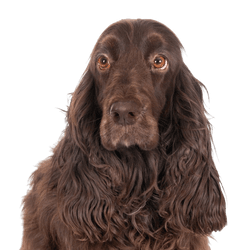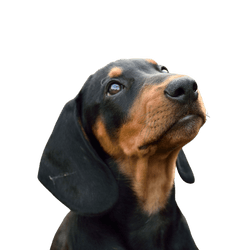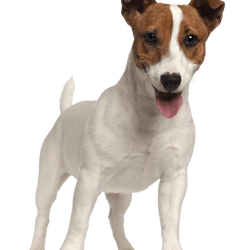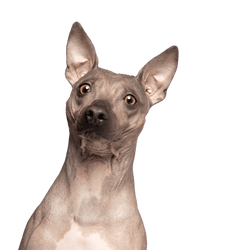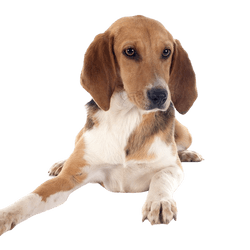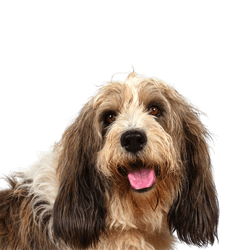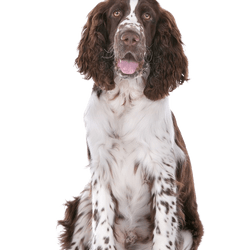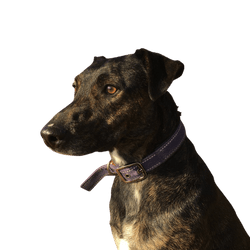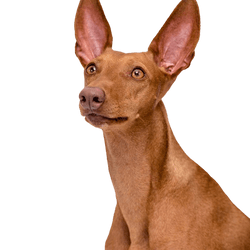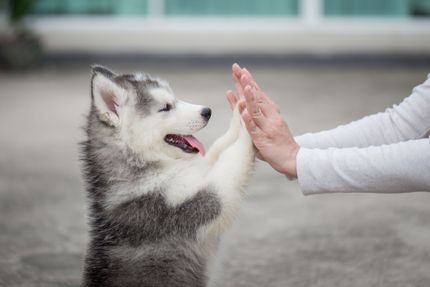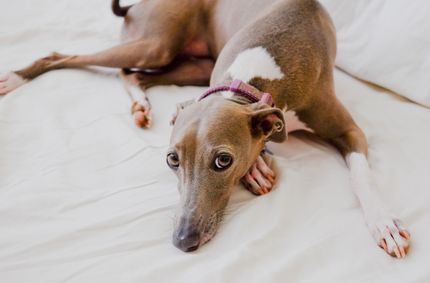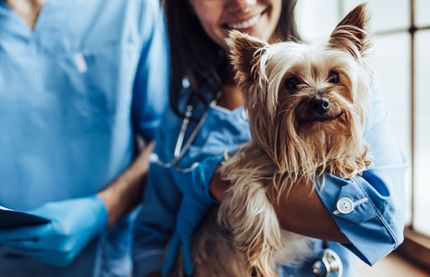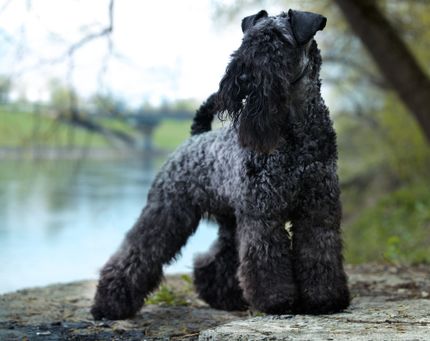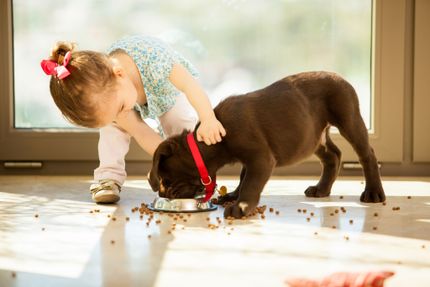
Irish Terrier Breed description: Character & Co
Irish Terrier
Facts & Origin
What is the origin of Irish Terriers?
It is uncertain since when exactly Terriers have existed. But fact is, that they were bred for earthwork (the name is derived from the Latin "Terra" for earth). Presumably the Old English Black and Tan Terriers are among their ancestors, an old British dog breed that is now extinct. The task of the long-legged Terrier used to be accompanying mounted huntsmen. If a fox had crawled into a burrow, the Irish Terrier was used for "blowing it out" as it is called in hunter's jargon. The dogs showed courage and could defend themselves. But also on the farms of the hilly Irish landscape the eager working dog found its use. Their task was to free stables and houses from rats and mice. Furthermore, they served as attentive watchdogs. Rarely, they were also used in cruel dog fights. Until 1880, the Irish Terrier existed in different colours, only in 1879 the foundation of the breed club for Irish Terriers defined a uniform red colour standard. The Irish Terrier Glen of Imaal, also used for fox hunting, is clearly smaller than the Irish Terrier and has a typical black-blue mask.
What are the breed characteristics of the Irish Terrier?
The Irish Terrier is a long-legged dog with an almost square build. The tail is set high, the neck is stretched upwards. Every muscle of the temperamental bundle of energy seems to be under tension. Its movements are smooth and they are fast and persevering. Their 'moustache' gives them a cheeky look. You should never forget that the "Red Irishman" is a passionate hunter.
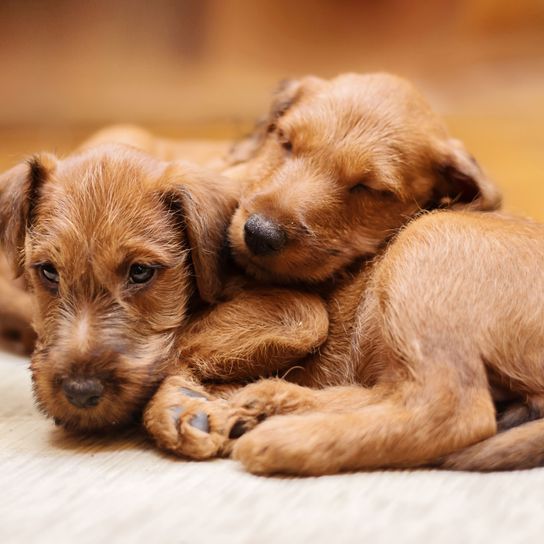


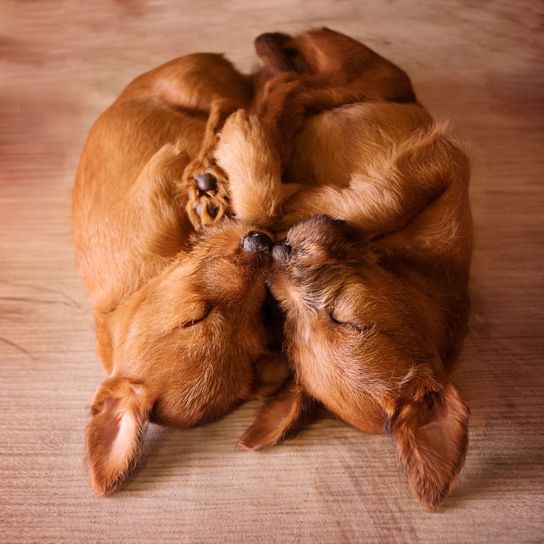
| Alternate Name | - |
| Origin | Ireland |
| Life expectancy | 13 - 14 years |
| Care requirements | low-maintenance |
| Activity level | low |
| FCI group | Large and medium sized Terriers |
| AKC group | Terrier Group |
| KC group | Terrier Group |
Attitude, character and temperament of the breed
What are the typical character traits of Irish Terriers?
The reason why the Irish Terrier is also called "daredevil" or "red devil" has to do with its energetic temperament. It is a real daredevil, who sometimes shows a lot of stubbornness. Therefore the breed is more suitable for owners with dog experience. From the very first day you take your Irish Terrier puppy home you should start with a consistent training. There is no room for compromise, because the clever four-legged friend takes advantage of every insecurity you show. It is best to visit a dog school with your four-legged friend: Early socialisation is absolutely necessary, since this breed doesn't necessarily treat other dogs in a gentle manner. If you set clear rules and the Irish Terrier has accepted you as pack leader, you have won a friend for life. It loves trips to the countryside and feels most comfortable in nature. In order to guide their temperament into the right direction they need a task. Whether it is accompanying you while going horse riding, cycling, jogging or doing dog sports, they enthusiastically take part in everything. Even with (older) children the jolly companion gets along well.
Character
Usage

Health and breeding information
What are typical diseases of Irish Terriers?
The following diseases occur with a higher frequency:
- Hyperkeratosis: this disease causes cornification of the skin
- Hypothyroidism
- Paw malposition
What should be considered in regards to Irish Terrier breeding?
If you want to buy an Irish Terrier, pay your breeder a visit several times if possible. This way you can get to know the puppies as well as the parents in peace and quiet and have the pedigree and health certificates shown to you. As inbreeding has led to some genetic diseases in the past, pay close attention to the ancestors of the puppy. It is also important that the little dog already gets familiarised with the trim table when it still lives with the breeder. This procedure will accompany you throughout your life together. In its first 10 weeks of life, the little furry friend should already have gained experience with this. If an older animal is also an option for you, an Irish Terrier in need is probably already waiting to be adopted into a new home by you.
Buying an Irish Terrier
An Irish Terrier costs about 1000 Euros.

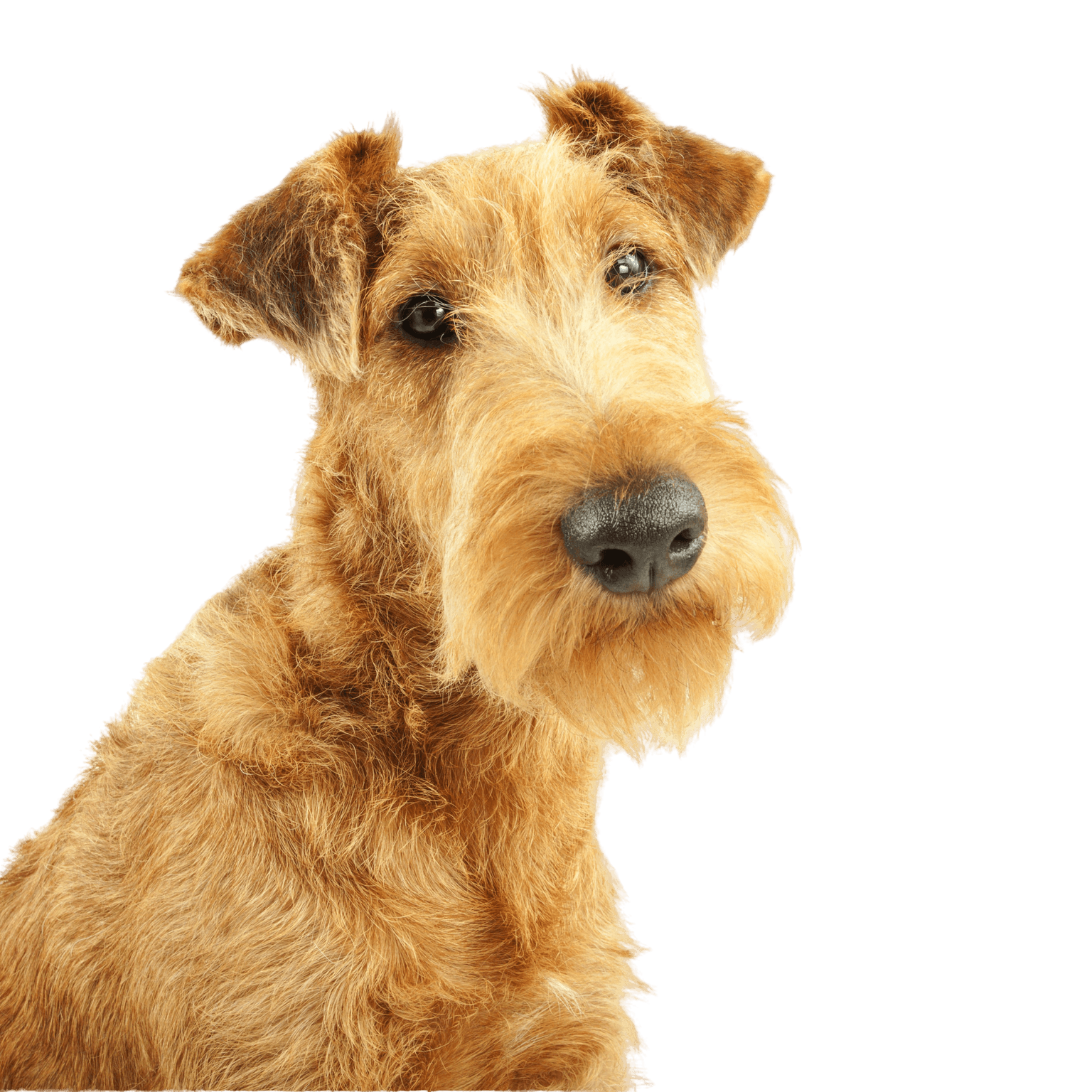
Appearance and coat of the Irish Terrier
The coat Irish Terrier's coat is always red, light and dark nuances are permitted. Typical for them is a "broken" coat in the technical jargon: This means flat lying, hard top coat. Under this the four-legged friend has a soft undercoat, which is used to protect it from the changing weather conditions in Ireland. Two to three times a year a visit to the dog salon is recommended. There, their coat will get trimmed: Using a special tool, the professional removes dead hairs from the rough coat. With a little practice you can trim your darling yourself. This not only removes dead hairs, but also stimulates new growth. One of the advantages of the breed is that - with appropriate coat care - it sheds very little.
How big does an Irish Terrier grow?
The approximate shoulder height is 45 centimetres.
How much does an Irish Terrier weigh?
An Irish Terrier will weigh about 12 kilograms.
What is the average lifespan of an Irish Terrier?
The life expectancy of an Irish Terrier is 13 to 14 years.
| Fur length | short |
| Fur | rough-haired |
| Ear shape | - |
| Tail | short |
| Anatomy | - |
| Size ♀ | 35 - 40 cm |
| Weight ♀ | 11 - 12 kg |
| Size ♂ | 40 - 45 cm |
| Weight ♂ | 11 - 12 kg |
| Suitable For | suitable for allergy sufferers, Beginner, Seniors |
Colors
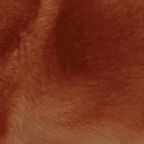
Known Diseases
Skin inflammations
Can be hereditary in certain breeds.
Metabolic diseases (cystinuria)
Cystinuria is a hereditary metabolic disease. Affected dogs lack a transport protein for certain amino acids (protein building blocks). In the kidney, the task of this transport protein is a return transport of amino acids from the urine into the bloodstream.
Other medium dogs
Useful Articles
You can find articles that might interest you in the dogbible blog to match your favorite breed.
Visit our magazineto stay up to date on dog trends.
To find out more, view our Privacy Policy
Find here the breed that suits you and find out what character traits it has. Here you can also learn more about the origin, size and weight of your favorite breeds.
Matching your favorite breed, you'll find articles that might interest you on the dogbible dog blog.
Riding a bike with the dog - Forbidden?
Going to the lake with your dog: Austrian dog beaches at the lake
KONG for the dog - the allround toy
Dog ran away - what to do if the dog is gone?
5 tips for the trick "give paw" - so you learn it to your dog
